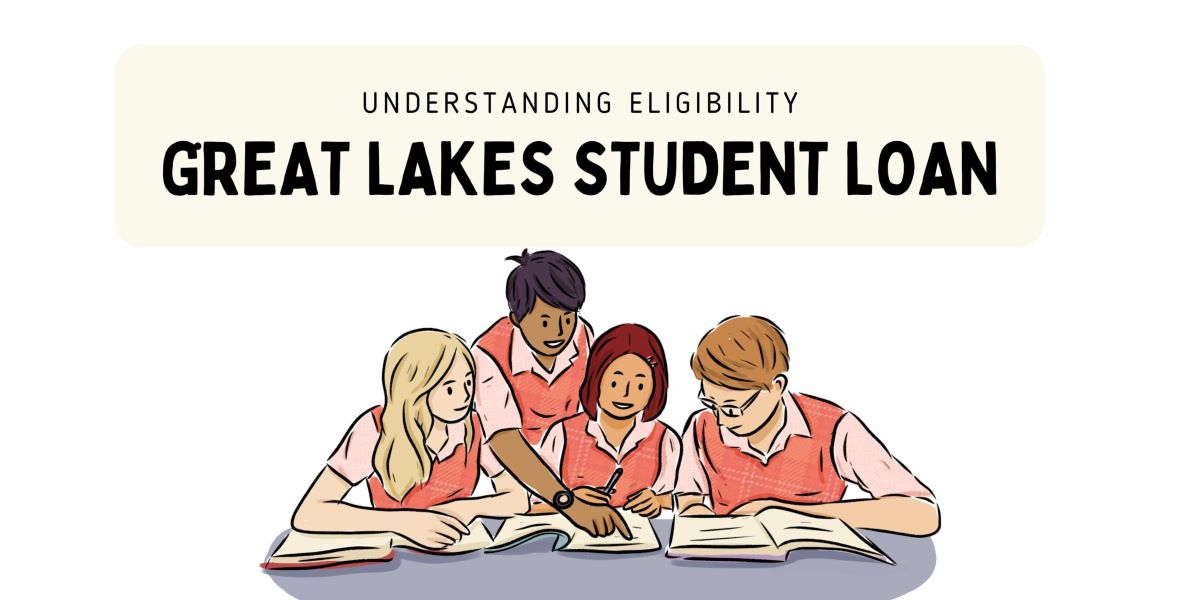

Finance
How To Find A Cosigner For A Student Loan
Published: November 3, 2023
Need help obtaining a cosigner for your student loan? Check out our comprehensive guide on finding a cosigner to secure your finance!
(Many of the links in this article redirect to a specific reviewed product. Your purchase of these products through affiliate links helps to generate commission for LiveWell, at no extra cost. Learn more)
Table of Contents
Introduction
Finding ways to finance your education can be a daunting task, especially when faced with the high costs associated with pursuing higher education. Student loans are a common solution for many students, providing financial assistance to cover tuition fees and other educational expenses. However, what happens when you don’t meet the necessary credit requirements or you’re unable to secure a loan on your own?
This is where a cosigner comes in. A cosigner is someone who agrees to share the responsibility of repaying the loan with the primary borrower. They essentially act as a guarantor, providing assurance to the lender that if the borrower is unable to make payments, they will step in and fulfill the financial obligations. Having a cosigner can increase your chances of getting approved for a student loan and may even lead to better interest rates and terms.
But finding a cosigner willing to take on this responsibility is not always easy. It requires careful consideration and open communication to ensure both parties understand their obligations and duties. In this article, we will explore the ins and outs of finding a cosigner for a student loan, including understanding their role, assessing requirements, exploring potential options, approaching potential cosigners, preparing documentation, discussing loan terms and responsibilities, and finalizing the cosigner agreement.
Remember, choosing a cosigner is a serious decision that can have long-term financial implications. It’s important to approach this process with care and explore all your options before making a final decision. So, let’s dive in and discover how to find a cosigner for a student loan.
Understanding the Role of a Cosigner
Before we delve into the process of finding a cosigner for a student loan, it’s essential to understand the significance and responsibilities of this role. A cosigner is much more than just a signature on the loan application. They play a vital role in increasing the chances of loan approval and securing favorable terms.
When a cosigner agrees to assist with a loan, they are essentially taking on a legal obligation to repay the debt if the borrower defaults on payments. This means that if you, as the primary borrower, are unable to make timely payments or default on the loan, the cosigner becomes responsible for repaying the outstanding balance in full.
One of the primary reasons lenders require a cosigner is to minimize their risk. When an individual has little to no credit history or a poor credit score, lenders may be hesitant to grant a loan. Having a cosigner with a strong credit history and a good credit score reassures the lender that there is a lower risk involved, thereby increasing the chances of loan approval.
Additionally, a cosigner’s involvement can result in more favorable loan terms. Lenders often offer lower interest rates and better repayment options when a cosigner with a good credit history is involved. This is because the cosigner’s creditworthiness acts as an assurance to the lender, indicating that the loan will more likely be repaid as agreed.
It’s crucial to establish open communication and trust with your potential cosigner. Discuss and ensure that both parties are fully aware of the responsibilities involved. It’s not a decision to be taken lightly, as a cosigner’s credit score and financial standing can be affected if the borrower fails to meet their obligations.
Now that we have a clear understanding of the role of a cosigner, let’s move on to the next step: assessing the requirements for a cosigner.
Assessing the Requirements for a Cosigner
When searching for a cosigner for your student loan, it’s important to not only consider individuals who are willing to take on the responsibility but also those who meet the necessary requirements. Lenders typically have specific qualifications that a cosigner must meet to be eligible for loan approval. Here are some key criteria to assess when considering potential cosigners:
- Credit History: A cosigner with a strong credit history enhances the likelihood of loan approval. Lenders typically prefer cosigners who have a solid credit score, indicating responsible borrowing and repayment habits. This demonstrates to the lender that the cosigner is financially reliable and more likely to fulfill their repayment obligations.
- Income Stability: Lenders also consider the income stability of a potential cosigner. They want to ensure that the cosigner has a steady income that is sufficient to cover the loan payments, in addition to their own financial obligations. A cosigner with a stable income provides a sense of security to the lender, knowing that the loan will be repaid on time.
- Debt-to-Income Ratio: Another important factor lenders analyze is the debt-to-income ratio of a cosigner. This ratio compares the amount of debt the cosigner has to their monthly income. A lower debt-to-income ratio indicates that the cosigner has a manageable level of debt and is more capable of taking on additional financial responsibilities, such as cosigning a student loan.
- Relationship: While not a requirement set by lenders, it’s essential to choose a cosigner with whom you have a strong and trustworthy relationship. This could be a family member, close friend, or someone who believes in your ability to succeed in your educational pursuits. Building trust and ensuring open communication are crucial for a successful cosigner-borrower relationship.
- Willingness: Lastly, but certainly not least, the willingness of the potential cosigner to assist with your student loan is key. They should fully understand the commitment they are making and be willing to accept the responsibility if the need arises. It’s important to have an open and honest conversation with your potential cosigner to ensure they are comfortable and willing to cosign the loan.
By carefully assessing these requirements, you can narrow down your options and find a cosigner who not only meets the lender’s criteria but is also someone you trust and have a strong relationship with. Once you’ve identified potential cosigners, it’s time to approach them and discuss the possibility of cosigning your student loan.
Exploring Potential Cosigner Options
When searching for a cosigner for your student loan, it’s important to consider various potential options. Here are some potential sources to explore when looking for a suitable cosigner:
- Family Members: Family members, such as parents, grandparents, or siblings, are often the first choice for cosigners. They typically have a vested interest in your education and may be more willing to help. Additionally, family members may have a better understanding of your financial situation and educational goals, making them more likely to support your loan application.
- Close Friends: Close friends who are financially stable and have a good credit history can also be potential cosigners. However, keep in mind that mixing finances and friendships can be complex, so it’s crucial to have open and honest discussions and establish clear expectations and boundaries before moving forward.
- Mentors or Advisors: If you have a mentor or advisor who has supported you throughout your academic journey, they may be willing to cosign your student loan. Mentors and advisors often have a vested interest in your success and may genuinely want to help you achieve your educational goals.
- Relatives or Guardians: If you don’t have immediate family members available to cosign your loan, consider other relatives or guardians who are financially stable and have a good credit history. They may be willing to support your education by acting as a cosigner.
- Financially Established Individuals: While it may be more challenging to approach individuals who are not directly connected to you, there may be financially established individuals who are open to cosigning your loan. This could include professionals in your desired field or individuals who are passionate about education and helping others succeed.
It’s important to approach potential cosigners with a clear understanding of their financial situation and willingness to take on the responsibility. Make sure to have open and honest conversations about your educational goals, the loan terms, and the potential impact on their credit and financial standing. Keep in mind that not everyone may be willing or able to become a cosigner, so it’s essential to respect their decision and explore other options if needed.
Once you have identified potential cosigner options, it’s time to approach them and discuss the possibility of cosigning your student loan. We’ll cover tips for approaching potential cosigners in the next section.
Approaching Potential Cosigners
Approaching potential cosigners for your student loan requires careful consideration and effective communication. Here are some tips to help you navigate this process:
- Be Prepared: Before approaching potential cosigners, gather all the necessary information about the loan, including the loan amount, interest rate, repayment terms, and any other relevant details. Being well-prepared demonstrates your seriousness and responsibility.
- Explain Your Education Plans: Clearly communicate your educational goals and how the student loan will help you achieve them. Provide specific details about your field of study, future career prospects, and the potential impact of your education on your life. This helps potential cosigners understand the purpose and importance of the loan.
- Outline the Benefits to the Cosigner: Explain the potential benefits that come with cosigning the loan, such as improving your credit history, strengthening your financial future, and the satisfaction of helping someone pursue their dreams. Assure them that you are committed to repaying the loan on time to protect their credit score.
- Address Their Concerns: Understand that potential cosigners may have concerns about cosigning a loan. These concerns may include the impact on their credit history and financial obligations. Be prepared to address these concerns and provide accurate information and reassurance. Transparency is key in building trust and easing their worries.
- Discuss Expectations: Clearly communicate the expectations and responsibilities of both parties involved. Discuss the repayment plan, outline the consequences of missed payments or default, and establish a plan for open communication throughout the loan term. This ensures everyone is on the same page before moving forward.
- Respect Their Decision: Understand that not everyone will be willing or able to become a cosigner. Respect their decision, even if it may be disappointing. Remember, it’s important to maintain healthy relationships, and forcing someone into cosigning against their will can strain the relationship and create unnecessary tension.
Approaching potential cosigners with respect, transparency, and clear communication increases your chances of finding someone who is willing to support your educational journey. Remember to express your gratitude for their consideration, even if they ultimately decide not to become a cosigner.
Once you have found a potential cosigner who is willing to assist, the next step is to prepare the necessary documentation for the cosigner. We’ll discuss this in the next section.
Preparing Documentation for the Cosigner
Once you’ve found a willing cosigner for your student loan, it’s important to gather and prepare the necessary documentation to facilitate the loan application process. Here are the essential documents you may need to provide to your cosigner:
- Loan Application: Start by completing the loan application form provided by the lender. This form will require personal information, such as your name, address, contact details, and social security number. Make sure all the information is accurate and up to date.
- Loan Agreement: Review and provide a copy of the loan agreement to your cosigner. This document outlines the terms and conditions of the loan, including repayment schedules, interest rates, and any additional fees or charges. Make sure your cosigner understands the terms and is comfortable with them.
- Financial Information: Gather and provide documentation related to your financial situation, such as bank statements, income statements, and tax returns. This helps your cosigner assess your ability to repay the loan and provides assurance that you have the means to fulfill your financial obligations.
- Credit Information: Share your credit report with your cosigner, allowing them to review your credit history. This gives them insight into your past borrowing behavior and helps them make an informed decision about cosigning the loan.
- Loan Repayment Plan: Create a detailed loan repayment plan that outlines how you will manage the loan payments over the term of the loan. This includes information about your expected income, monthly budget, and how you will prioritize loan repayment. Sharing this plan with your cosigner demonstrates your commitment and responsibility.
- Legal Documentation: Depending on the lender’s requirements, your cosigner may need to provide legal documentation, such as proof of identity (e.g., passport or driver’s license) and proof of address (e.g., utility bill or lease agreement). Make sure your cosigner is aware of and prepared to provide any necessary legal documentation.
Ensure that all the documentation is accurate, complete, and up to date. Double-check everything before submitting it to the lender. Keep in mind that different lenders may have different specific requirements, so it’s important to consult with them and follow their guidelines when preparing the documentation.
Once you’ve gathered all the necessary documents, it’s time to discuss the loan terms and responsibilities with your cosigner. We’ll cover this important step in the next section.
Discussing Loan Terms and Responsibilities
After preparing the documentation for your cosigner, it is crucial to have a thorough discussion about the loan terms and responsibilities. This conversation ensures that both parties have a clear understanding of their obligations and sets the stage for a successful cosigner-borrower relationship. Here are some key points to cover when discussing the loan terms and responsibilities with your cosigner:
- Loan Amount: Discuss the specific loan amount you are seeking and explain why that amount is necessary for your education. This will help your cosigner understand the financial commitment involved.
- Repayment Plan: Explain the proposed repayment plan, including the monthly payments, repayment period, and any flexibility or options for repayment modification. Discuss how you plan to make the loan payments and how you will ensure they are made on time.
- Interest Rates and Fees: Inform your cosigner about the interest rates associated with the loan and any additional fees or charges they should be aware of. Help them understand the total cost of the loan over its term.
- Financial Responsibilities: Clearly outline the financial responsibilities of both the borrower and the cosigner. Make sure your cosigner understands that they are equally responsible for the loan and that any missed or late payments will impact their credit history. Discuss how you plan to manage your finances to meet the loan obligations.
- Communication: Establish open lines of communication and discuss how you and your cosigner will stay in contact regarding the loan. Agree on how often you will provide updates on your academic progress, financial situation, and any changes that may impact loan repayment.
- Contingency Plans: Discuss potential scenarios where you may need your cosigner to step in and make payments. For instance, if you encounter financial difficulties or are unable to make a payment, it’s important to have a plan in place on how you will communicate and rectify the situation.
- Appreciation and Gratitude: Express your gratitude for your cosigner’s trust and support. Let them know how much you value their involvement and reassure them that you are committed to repaying the loan responsibly.
By openly discussing the loan terms and responsibilities, you and your cosigner will be on the same page. This ensures everyone understands the expectations and avoids any misunderstandings or conflicts down the line.
Once the loan terms and responsibilities have been thoroughly discussed and agreed upon, it is time to move forward and finalize the cosigner agreement. We will cover this final step in the next section.
Finalizing the Cosigner Agreement
After the discussions about loan terms and responsibilities, it is essential to finalize the cosigner agreement to solidify the commitment made by both parties. The cosigner agreement serves as a legally binding document that outlines the roles and responsibilities of the borrower and the cosigner. Here are the steps to finalize the cosigner agreement:
- Consult with a Legal Professional: It is recommended to consult with a legal professional to ensure that the cosigner agreement is legally sound and meets all necessary requirements. They can provide guidance and assist in drafting an agreement that protects the interests of both parties involved.
- Include Key Information: The cosigner agreement should include essential information such as the names and contact details of both the borrower and the cosigner, the loan amount, repayment terms, interest rates, and any provisions for modifications or amendments to the agreement.
- Specify Obligations and Duties: Clearly state the obligations and duties of both the borrower and the cosigner in the agreement. This includes responsibilities for making timely payments, maintaining communication, and honoring the terms of the loan.
- Address Default and Consequences: Outline the consequences of default, missed payments, or any other breach of the loan agreement. Clarify the actions that will be taken by the lender and the impact it may have on both the borrower’s and cosigner’s credit history.
- Include Dispute Resolution Terms: It is advisable to include provisions for dispute resolution in the cosigner agreement. This can help streamline the resolution process if any conflicts or disagreements arise between the borrower and the cosigner.
- Obtain Signatures: Once the cosigner agreement is drafted, reviewed, and finalized, both the borrower and the cosigner should sign the document. This signifies their acknowledgement and acceptance of the terms and conditions stated in the agreement.
- Maintain a Copy: Make multiple copies of the signed cosigner agreement and ensure that both the borrower and the cosigner retain a copy for their records. This ensures that everyone has access to the details of the agreement whenever it is needed.
Finalizing the cosigner agreement provides a solid foundation for the cosigner-borrower relationship and ensures that both parties are aware of their rights and responsibilities. It also helps minimize misunderstandings and serves as a reference point if any issues arise during the loan term.
Remember, the cosigner agreement should be treated with the seriousness it deserves, as it is a legally binding document. If there are any concerns or questions regarding the agreement, it is advisable to seek legal advice for clarification.
With the cosigner agreement in place, you are now ready to move forward with your student loan, knowing that you have the support and commitment of your chosen cosigner.
Conclusion
Securing a cosigner for your student loan can be a crucial step in obtaining the necessary financing for your education. A cosigner increases your chances of loan approval and can lead to more favorable loan terms. However, finding a cosigner and navigating the process requires careful consideration and effective communication. Here are the key takeaways from this guide:
First and foremost, understanding the role of a cosigner is essential. A cosigner acts as a guarantor, sharing the responsibility of repaying the loan and increasing the likelihood of loan approval.
Assessing the requirements for a cosigner is important to find someone who meets the necessary qualifications. Consider their credit history, income stability, debt-to-income ratio, and the relationship you have with them.
Exploring potential cosigner options helps in finding suitable individuals who are willing to take on the responsibility. This includes family members, close friends, mentors, relatives, or financially established individuals.
Approaching potential cosigners with preparedness, clear explanations of your education plans, and addressing their concerns will foster trust and increase the likelihood of finding a willing cosigner.
Preparing documentation for your cosigner ensures that both parties have the necessary information to proceed with the loan application. Gather loan application forms, loan agreements, financial and credit information, and any legal documentation required.
Discussing loan terms and responsibilities will ensure both the borrower and the cosigner are on the same page. Clear communication about the loan amount, repayment plan, interest rates, and expectations builds a strong foundation for the cosigner-borrower relationship.
Finally, finalizing the cosigner agreement in consultation with a legal professional and obtaining signatures solidifies the commitment made by both parties and provides a clear reference for any future disputes.
Remember, finding a cosigner is a serious decision that requires trust, responsibility, and open communication. It is crucial to maintain a strong and respectful relationship with your cosigner throughout the loan term.
By following these steps and approaching the process with care, you can increase your chances of finding a suitable cosigner and successfully obtaining the student loan you need to pursue your educational goals. With the support of a cosigner, you can focus on your studies and build a brighter future.














